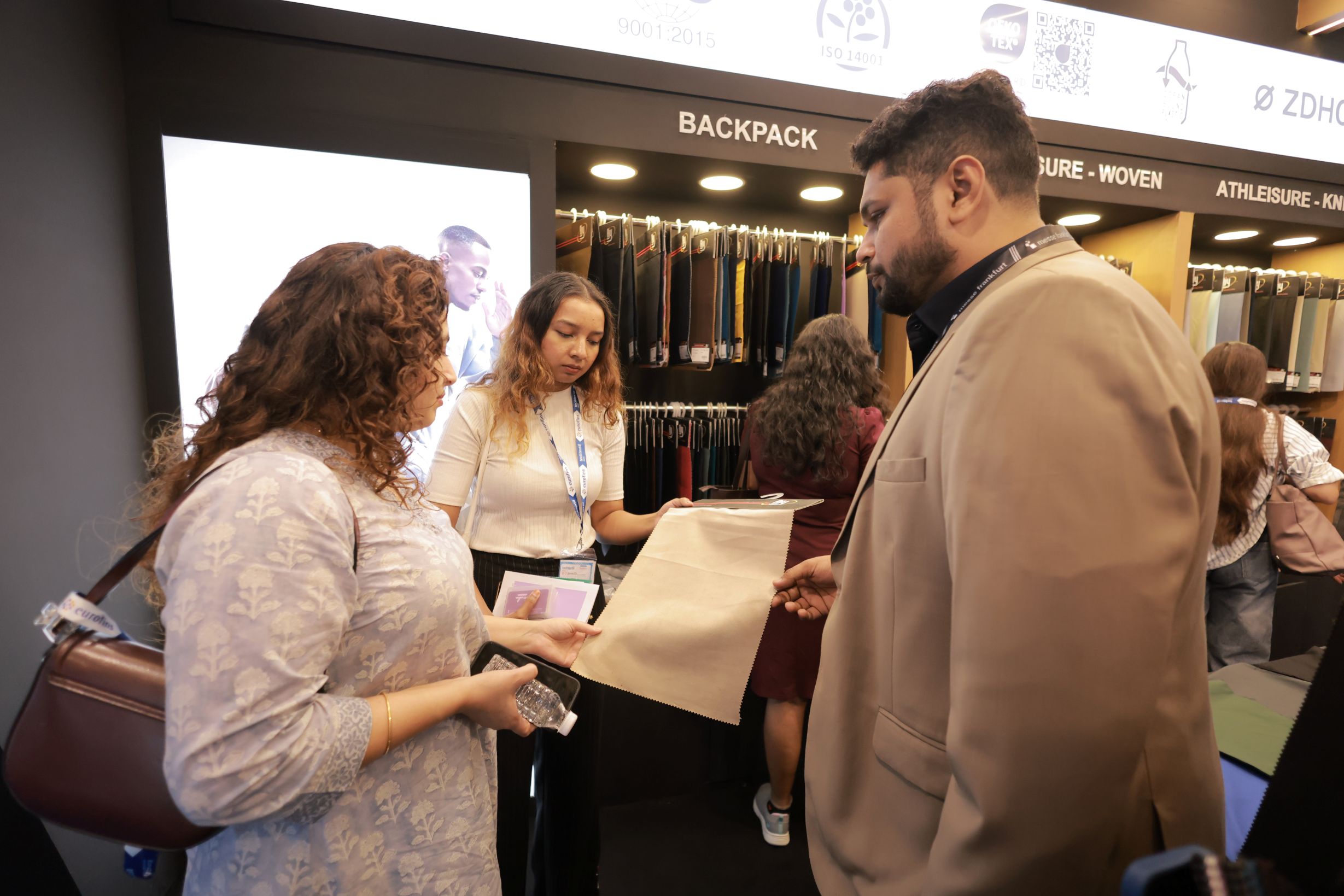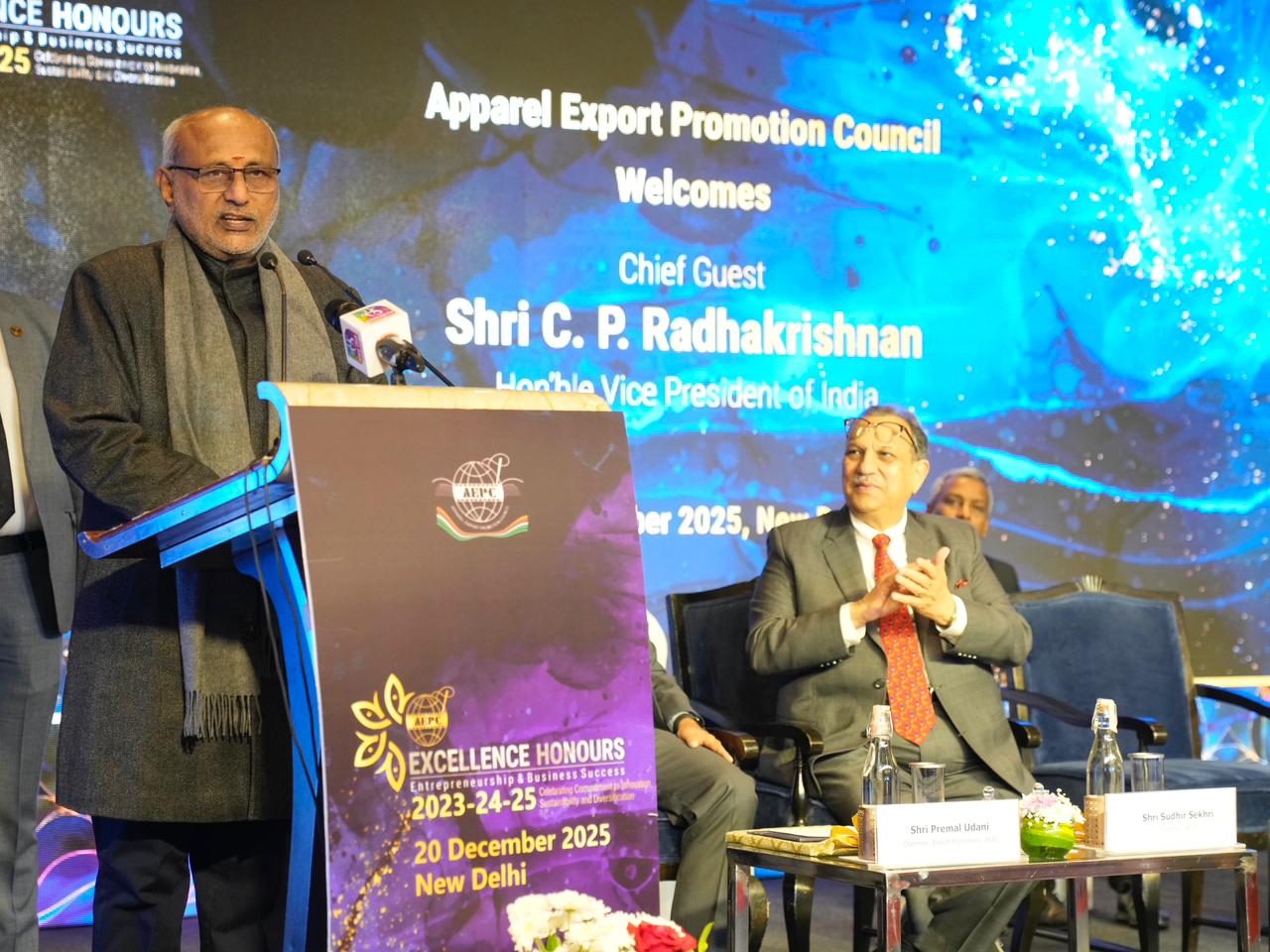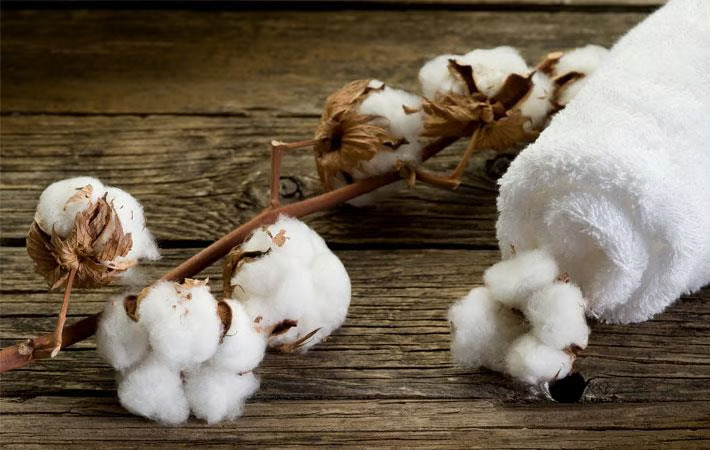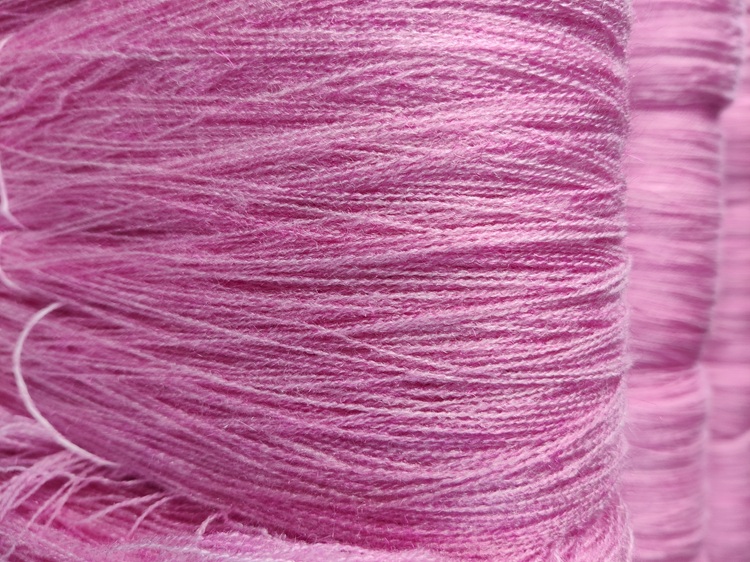FW
Ludovic Pauchard, Industrial Director, Louis Vuitton, has been promoted as the Industrial and Craftsmanship Director, LVMH Group and Executive Chairman, VMH Métiers d'Art, effective September 1, 2025.
In his new role, Pauchard will report to Stéphane Bianchi, Group Managing Director, LVMH. He will be responsible for ensuring operational excellence across the entire production value chain, while upholding LVMH's commitments regarding ethical conduct, vigilance, environmental protection and social responsibility.
In this new role, he will leverage industrial strategy to create a lasting competitive advantage and foster innovation across all our Maisons, says Pietro Beccari, chairman and chief executive officer of Louis Vuitton.
Meanwhile, as Executive Chairman, LVMH Métiers d'Art, Pauchard will be responsible for securing and preserving artisanal supply chains and strategic savoir-faire specific to each sector, thus helping nurture the creativity and excellence of the group's maisons.
Pauchard's appointment came in tandem with other promotions and changes within the group.
Jean-Baptiste Voisin, Chief Strategy Officer, LVMH, relinquished his responsibilities as head of LVMH Métiers d'Art and will now take on leadership of LVMH Media Research and Brand Image teams, previously helmed by Mathilde Delhoume, who is also taking on new responsibilities.

The conversations at the recent ‘Innovation Forum’ have blossomed into a clear call to action: the fashion industry is under increasing pressure to not just talk about sustainability, but to prove it. With the looming shadow of the EU's Ecodesign for Sustainable Products Regulation (ESPR), brands are scrambling to demonstrate their commitment to circularity and, crucially, durability. But in a world awash with greenwashing, how can consumers – and regulators – truly know if a garment is built to last?
The answer, it seems, lies in a new metric gaining traction: the Intrinsic Durability Multiplier (IDM). This innovative approach, deeply embedded within the Product Environmental Footprint (PEF) methodology for Apparel and Footwear, promises to inject much-needed transparency and quantifiable data into the often-vague claims of product longevity.
Beyond buzzwords, quantifying ‘built to last’
For years, brands have touted the durability of their products, often relying on subjective descriptions and anecdotal evidence. The PEF framework, however, introduces a rigorous and standardized approach. It mandates specific testing protocols to evaluate the fundamental resilience of apparel and footwear.
These tests delve into the core performance factors that dictate a product's lifespan:
• Abrasion resistance: How well does the fabric withstand rubbing and wear? Standardized tests like the Martindale abrasion test simulate everyday use and determine the number of cycles a material can endure before showing significant damage.
• Seam strength: How robust are the crucial connections holding a garment together? Tensile strength tests measure the force required to break a seam, highlighting potential weak points.
• Color fastness: How resistant is the fabric's color to fading, bleeding, or crocking (rubbing off)? Standardized light fastness, wash fastness, and rub fastness tests quantify color retention under various conditions.
From test tube to tangible metric
The raw data generated from these tests doesn't directly translate into a consumer-friendly metric. This is where the ‘Durability Score’ and the subsequent IDM come into play. Anya Sharma, a materials scientist specializing in textile durability points out, think of the Durability Score as a weighted average of the performance across these key tests. Different product categories will have different weighting factors, acknowledging that the stress points for a pair of jeans will differ significantly from those of a delicate blouse. This Durability Score then acts as the foundation for calculating the IDM. The exact formula remains complex and specific to the PEF methodology, but the core principle is: a higher Durability Score translates to a higher IDM.
Why IDM matters
The IDM is not just an academic exercise; it has significant implications for a product's environmental footprint calculation within the PEF framework. A higher IDM acts as a multiplier, effectively extending the assumed lifespan of the product in the environmental assessment. Consider this simplified illustration.
Table: How the IDM works
Product Durability Score (Arbitrary Units) Weighting Factor IDM (Hypothetical) Assumed Lifespan (PEF Calculation) Basic T-shirt (Brand A) 60 0.8 1 2 years Durable T-shirt (Brand B) 90 0.8 1.3 2.6 years
In this example, even with the same initial product category and weighting factor, Brand B's more durable t-shirt, evidenced by its higher Durability Score and IDM, is recognized as having a longer potential lifespan, thus potentially lowering its annual environmental impact
Brands embracing the durability data revolution
Several pioneering brands are already leveraging durability testing and exploring how the IDM can strengthen their sustainability narratives.
Patagonia: Known for its long-standing commitment to durability and repairability, Patagonia has been rigorously testing its products for years. While they may not explicitly use the PEF's IDM yet, their internal data on abrasion resistance and seam strength aligns perfectly with its principles. Their "Worn Wear" program, encouraging repair and reuse, is a testament to the value they place on product longevity.
Nudie Jeans: This Swedish denim brand emphasizes the durability of its organic cotton jeans and offers free repairs. Their transparency about the materials and construction quality implicitly supports a higher potential IDM. They actively encourage consumers to extend the lifespan of their garments, reducing their environmental impact.
While the IDM offers a promising path towards greater transparency, challenges remain. Standardizing testing methodologies across the vast and diverse apparel and footwear landscape is a complex undertaking. Ensuring accurate product category mapping and comprehensive Bills of Materials are also crucial for the IDM to be truly meaningful. Also, the industry needs to educate consumers on the significance of the IDM. A simple, easily understandable label or rating system could empower shoppers to make more informed choices based on verified durability data.
Thus the Intrinsic Durability Multiplier, underpinned by rigorous testing and transparent data, represents a significant step forward for the apparel and footwear industry. It moves beyond vague sustainability pledges and offers a quantifiable way to assess and communicate product longevity. As the ESPR looms and consumer demand for truly sustainable products grows, the IDM is poised to become a crucial tool for brands looking to not only meet regulatory requirements but also to build trust and a more circular future for fashion. The era of "built to last" is no longer just a marketing slogan; it's becoming a data-backed reality.
Vietnam's state-run textile and garment powerhouse, Vietnam National Textile and Garment Group’s (Vinatex) profits increased by 197 per cent to VND556 billion ($21.3 million) in H1, F25 as export orders rose due to a delay in decision on imposing punitive tariffs on Vietnamese goods by the United States.
Vinatex’s revenue also increased by 8 per cent to VND9.035 trillion ($345.8 million) during the period, accounting for 49 per cent of their full-year target.
Le Tien Truong, Chairman, Vinatex, attributes this boost to a stronger global demand, improved pricing, and early orders. Orders resumed two to three months ahead of typical schedules, with fewer fragmented batches, leading to more efficient operations and declining inventory levels, he notes.
The most significant impetus came after April 9, when the US Trade Representative postponed plans for countervailing duties on Vietnamese textile and garment exports. This initial proposal caused considerable concern among exporters, as the US is their largest overseas market.
Even though US authorities haven't finalized a decision on the proposed tariffs, both Vietnamese exporters and foreign buyers are proactively negotiating to ensure they don't miss crucial production cycles, particularly for the upcoming winter and holiday seasons. If we wait for the final tariff outcome, it may be too late to deliver for the peak season, Truong explains, emphasizing on the importance of maintaining trust within the global supply chain.
Truong anticipates, the imposed tariff levels will be manageable based on recent technical discussions. Orders growth will remain robust through the second half of the year with exports rising by 8 per cent-10 per cent, he estimates. Vinatex aims for a full-year consolidated profit between VND950 billion and VND1 trillion ($36.4–38.3 million).
Setting a new monthly record Vietnam's textile and garment exports increased by 6 per cent Y-o-Y to $3.84 billion in May 2025, surpassing even post-pandemic highs from 2022. For the first five months of 2025, total sector exports increased by 10 per cent Y-o-Y to $17.8 billion. With over 13,000 textile and garment enterprises, Vietnam continues to be a top global apparel exporter.
Pakistan's textile exports increased by 7.37 per cent to $16.36 billion in the first eleven months of the current fiscal year. This is a notable jump compared to the $15.24 billion recorded in the same period last year, according to the Pakistan Bureau of Statistics (PBS).
This growth was mainly fueled by a strong performance in key segments including knitwear whose exports grew by 14.46 per cent to $4.56 billion. Meanwhile, bedwear exports increased by 10.56 per cent to $2.84 billion. These sectors emerged as major contributors to the overall rise in textile shipments.
Other areas also showed positive trends. Pakistan’s towel exports increased by 2.84 per cent to almost $995 million, while exports of tents, canvas, and tarpaulin rose by 9.58% to $177.77 million. Additionally, RMG exports rose by 6.35 per cent to $3.77 billion.
However, despite these gains, exports of other textile products declined. Raw cotton exports plummeted by 98.45 per cent to $0.87 million. Exports of cotton yarn declined by 32.04 per cent while those of cotton carded or combed fell by 99.28 per cent.
In May 2025, Pakistan’s textile exports decreased slightly by 1.75 per cent compared to May 2024 to $1.53 billion. However, exports showed a strong month-on-month increase of 25.42 per cent in May 2025 compared to April 2025.
Overall, despite challenges the textile industry in Pakistan demonstrated strong resilience and growth in the aforementioned period.
The Global Organic Textile Standard (GOTS) Version 7.0 has been recognized as one of the most advanced standards for due diligence in the textile sector by the Organisation for Economic Co-operation and Development (OECD).
The non-profit organization behind GOTS, Gold Standard announced, an OECD Alignment Assessment found GOTS Version 7.0 to be highly aligned with the OECD Due Diligence Guidance for Responsible Supply Chains in the Garment and Footwear Sector.
Having reviewed 167 criteria, the assessment confirmed, GOTS Version 7.0 addresses all six steps of the OECD Due Diligence Guidance. A significant 68 per cent of criteria were fully aligned, with another 30 per cent partially aligned, and only 2 per cent not aligned. Despite the overall result of being ‘partially aligned’ due to the OECD's stringent methodology, this outcome positions GOTS among the most advanced initiatives assessed to date.
Rahul Bhajekar, Managing Director, Global Standard, emphasizes, the recognition confirms GOTS’ significance as not just a certification, but also a robust tool supporting companies in embedding meaningful due diligence throughout their operations.
The OECD specifically commended GOTS for adopting a comprehensive approach which includes addressing the entire due diligence process, from risk identification and prioritization to mitigation, monitoring, communication, and remediation; defining consistent expectations across labor rights, environmental issues, and supply chain integrity and promoting responsible conduct within both certified companies' own operations and their full supply chains.
Ruslan Alyamkin, Responsible for Standard Development and Implementation (Social Responsibility), Global Standard, notes, the assessment validates GOTS as a system grounded in internationally recognized frameworks and confirms our Due Diligence Framework as an example of best practice in the industry. Aligned with the UN Guiding Principles on Business and Human Rights (UNGPs), the GOTS Due Diligence Framework offers companies a structured, risk-based method for upholding human rights, environmental integrity, and ethical governance throughout the textile value chain.
This recognition builds on GOTS's existing credibility, having already been recognized by organizations like the International Trade Centre, the US Department of Agriculture, and the US Environmental Protection Agency. Claudia Kersten, Managing Director. Global Standard, affirms, OECD recognition assures certified companies, consumers, and regulators alike of GOTS being a proven instrument that supports the cause for sustainability, empowering businesses to thrive while advancing the SDGs.
The Cotton Association of India (CAI) has revised its cotton production forecast for the current 2024-25 season spanning October-September downwards to 301.15 lakh bales from 327.45 lakh bales last year.
The association predicts, cotton production in North India will decline sharply to 28.80 lakh bales this season from 45.62 lakh bales in the previous season.
Production in Central India is also expected to decline to 180 lakh bales from 202.21 lakh bales last year. Conversely, South India's cotton production is anticipated to increase from 73.85 lakh bales to 86.50 lakh bales.
The nation's cotton consumption may decrease to 305 lakh bales from 313 lakh bales used in the previous year. Meanwhile, cotton exports are predicted to decline to 17 lakh bales from 28.36 lakh bales last season, while imports are expected to more than double, increasing to 39 lakh bales from 15.20 lakh bales.
The CAI has voiced concerns regarding the continuous increase in cotton's Minimum Support Prices (MSP). They argue that higher MSPs distort market dynamics, impede natural price discovery, and raise production costs for textile mills. This could lead to higher consumer prices and undermine the global competitiveness of Indian cotton.
Breaking new ground in textile recycling, the Thuringian Research Institute for Textiles and Plastics (TITK) Rudolstadt showcased a polo shirt made from triple-recycled cellulose fiber at the World Expo in Osaka, Japan.
At the Expo, Benjamin Redlingshöfer, Managing Director, TTK wore a polo shirt emblazoned with 300 per cent recycling, demonstrating the institute's groundbreaking achievement. The shirt's fabric is made from Lyohemp an innovative lyocell fiber from TITK derived from hemp pulp. The fiber can undergo three successive recycling processes while retaining the desirable qualities needed for a stylish, comfortable garment.
The fiber makes closed textile recycling cycles feasible, states Redlingshöfer. It elevates the recycling process in the textile industry to a whole new level, he adds.
Traditionally, textile recycling often involves downcycling, where high-quality textile fibers are converted into lower-quality products. Even in these cycles, recycled material typically comprises only 20 per cent to 40 per cent of the final product, with the remainder being virgin material.
TITK's fiber-to-fiber recycling program aims to overcome this limitation by producing recycled fibers that match the quality and performance of premium virgin fibers. The TITK has now impressively demonstrated that not only is 100 per cent recycling of cellulose fibers possible, but that this process can even be used three times in a row without having to compromise on desired fiber characteristics such as a pleasant, soft feel, a slight luster, and very good, even dyeability, explains Redlingshöfer
Building on the success of the Lyohemp® recycling project, TITK researchers are now applying their findings to polycotton textiles, further expanding the potential for truly circular textile production by separating synthetic and cellulosic fiber streams for high-quality recycling.
Global shipments of textile machinery displayed sharp contrasts across segments in 2024, according to the 47th annual International Textile Machinery Shipment Statistics (ITMSS) released by the International Textile Manufacturers Federation (ITMF). The report, compiled with input from over 200 manufacturers worldwide, covers six major categories spinning, draw-texturing, weaving, circular knitting, flat knitting, and finishing.
The spinning segment witnessed a major contraction. Shipments of new short-staple spindles dropped by 40 per cent, falling by 3.8 million units to 5.92 million. Open-end rotors saw a similar 39 per cent decline, totaling 623,000 units globally. The Asia & Oceania region continued to dominate, receiving 90 per cent of short-staple spindles and 89 per cent of rotors, although deliveries fell sharply. China, India, and Turkiye remained the top investors despite steep drops. Exceptions were noted in Vietnam and Bangladesh, where rotor shipments surged by 214 per cent and 44 per cent, respectively.
Long-staple (wool) spindle shipments bucked the trend, increasing by 62 per cent to 600,000 units. This growth was primarily driven by shipments to Iran, China, and Vietnam, accounting for 40 per cent, 30 per cent, and 13 per cent of global deliveries, respectively.
Texturing machinery showed the strongest recovery. Single-heater draw-texturing spindle shipments, mostly used for polyamide, jumped 95 per cent to 84,000 units, while double-heater spindles, used mainly for polyester, surged 80 per cent to 960,000 units. Asia & Oceania received nearly all deliveries, with China dominating the market.
In the weaving segment, global shuttle-less loom shipments rose by 32 per cent to 226,000 units. Water-jet looms led the increase with a 56 per cent growth, while air-jet looms rose 10 per cent. Rapier and projectile loom shipments declined by 7 per cent. Asia & Oceania absorbed 97 per cent of global loom deliveries, with China remaining the leading destination.
The circular knitting category faced a 15 per cent decline, with shipments totaling 28,000 units. China, though still the largest importer, recorded a sharp 42 per cent drop. India and Vietnam followed in second and third positions. Meanwhile, flat knitting machine shipments increased 16 per cent to 135,000 units, driven by continued demand from Asia, particularly China, which received 82 per cent of shipments.
Finishing machinery recorded a marginal 6 per cent rise overall. In the continuous fabrics segment, stenter shipments grew by 22 per cent. Other finishing machines reported mixed results, with dyeing lines showing both steep drops and triple-digit increases depending on the technology. In the discontinuous segment, jigger and beam dyeing machines declined by 44 per cent, while air jet and overflow dyeing equipment rose by 18 per cent and 5 per cent, respectively.
These contrasting trends reflect evolving regional dynamics, shifting investment patterns, and continued market volatility across global textile production.
Edla Rajitha, Member-Managing Committee, Prajwal Farmer Producer Company, from Pathipaka village in the Shayampet Mandal of Hanumakonda, recently commended farmers across Syamampeth, Geesugonda, Regonda and Parthagir Mandal for practicing H&M Better Cotton Initiative (BCI).
Speaking at a two-day Impact Panel Training session in Turkey, Rajitha informed, a global program focused on making cotton production more sustainable, the H&M Better Cotton Initiative is being implemented by 15, 563 Prajwal farmers in collaboration with WWF India.
At its recently concluded 2025 Conference, nonprofit organization, Better Cotton announced that it's on track to become a regenerative standard by next year.
This strategic shift will help boost their existing environmental protection goals and improve the working conditions for cotton farming communities. The new regenerative standard will also enable Better Cotton to establish guidelines focused on actively enhancing and restoring natural resources within agricultural and related ecosystems.
Eva Benavidez Clayton, Senior Director-Demand and Engagement, Better Cotton, emphasizes, there is a need to adopt approaches that go beyond simply mitigating or reducing harm. It is important to incorporate methods that actively restore the environment, she highlighted further stating, Better Cotton estimates, it will finalize the remaining steps to achieve regenerative standard status within the next 12 months.
Better Cotton is currently updating its criteria to secure this standard. The organization is also collaborating with its program partners to implement the standard and develop an outcomes-based reporting framework.
Building on Better Cotton's already recognized field-level standard, this move will ensure that farmers meeting their criteria adopt widely accepted regenerative practices, Clayton further noted.












